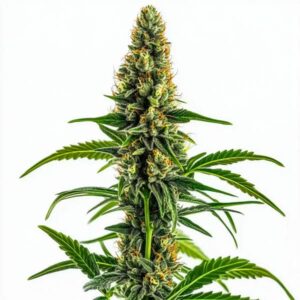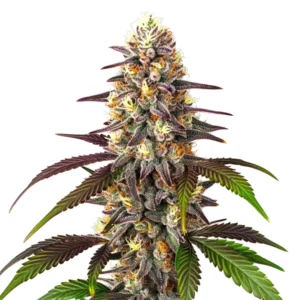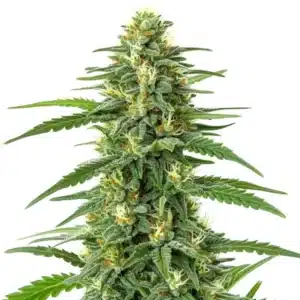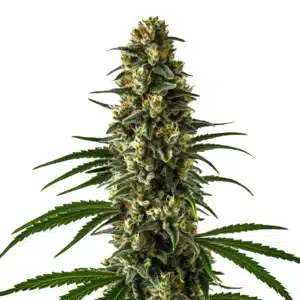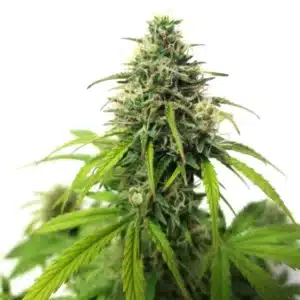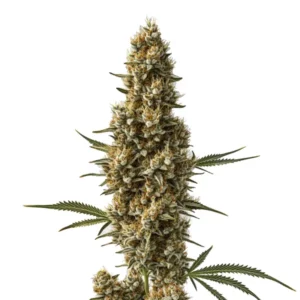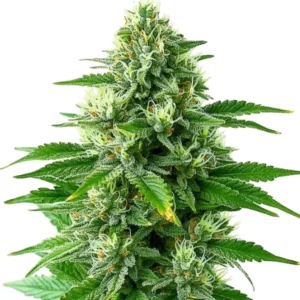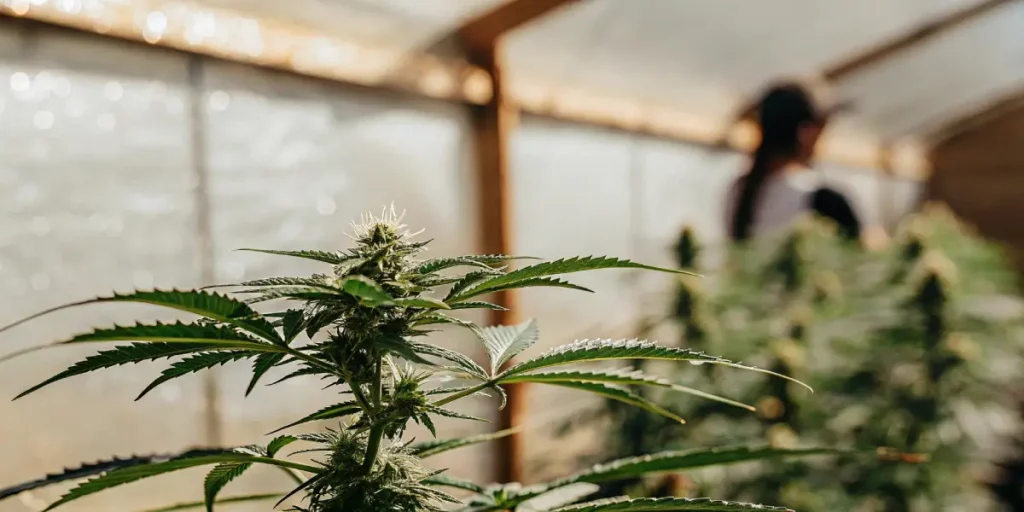
Optimizing Cannabis Growth with Auxins
Growing cannabis can be an art and a science. Using auxins effectively can significantly boost your plants’ health and yield. Auxins are plant hormones that play a crucial role in growth processes. They stimulate cell elongation and influence various developmental stages. When you harness their power, you can achieve exceptional results.
Auxins are particularly useful in optimizing cannabis root development. Roots are the foundation, providing support and nutrients. Auxins can enhance root growth, leading to stronger, healthier plants. They mimic natural hormones, guiding roots to explore deeper into the soil.
Recommended Strains
Fruity Pebbles
|
|
THC | 18% - 20% (Medium) |
|
|
Type | Feminized |
|
|
Yield | High |
|
|
Phenotype | 55% Indica / 45% Sativa |
Mamba Negra CBD
|
|
CBD | 10% – 20% (Medium) |
|
|
Type | CBD Feminized |
|
|
Yield | High |
|
|
Phenotype | 70% Indica / 30% Sativa |
Each cannabis strain may respond differently to auxins. Strains like Blue Dream from Blimburn Seeds can benefit from auxin application, supporting robust root systems and vigorous growth. Knowing your strain’s needs is key to unlocking the potential of auxins in your cultivation efforts.
Best Auxins for Cannabis Growth Optimization
Choosing the right auxins can make a world of difference. Not all auxins are created equal when it comes to cannabis. The most commonly used auxins include Indole-3-butyric acid (IBA) and Naphthaleneacetic acid (NAA). These are known for their effectiveness in promoting root development and overall plant growth.
IBA is often preferred for its natural-like properties. It’s less likely to cause abnormalities, making it a safe choice for both novice and experienced growers. NAA, on the other hand, is potent and can stimulate significant growth but requires careful handling to avoid over-application.
Knowing the best auxins for cannabis growth optimization involves recognizing the specific characteristics of each auxin. IBA mimics the natural growth hormones found within plants, providing a gentle boost that encourages healthy development. NAA, being more potent, is often reserved for situations where a more aggressive growth response is needed. This distinction is crucial for growers who aim to optimize cannabis growth with auxins without introducing unnecessary risks.
The selection between IBA and NAA often depends on the environmental conditions and the particular growth stage of the cannabis plant. IBA’s natural properties make it suitable for early-stage growth, where stability is key, while NAA’s strong effects are more applicable during stages where rapid expansion is desired. By knowing how these auxins function, growers can tailor their use to maximize plant health and yield effectively.
Promos & Deals
Impact of Auxins on Cannabis Flowering Stages
Auxins don’t just affect roots; they also play a vital role during the flowering stages. They influence cell division and elongation, crucial for bud development. During flowering, auxins can enhance bud size and density, leading to higher yields.
Cannabis strains like Girl Scout Cookies are known for their impressive flowering potential. By applying auxins at the right time, you can maximize this potential. Timing is everything. Auxins should be applied at the onset of flowering for the best results.
The impact of auxins on cannabis flowering stages is profound, as they help regulate the hormonal balance critical for successful bud development. During this stage, applying auxins can lead to the formation of fuller, more robust flowers. This process is not only about increasing size but also enhancing the overall quality and potency of the buds, making auxins an invaluable tool in the flowering phase.
Monitoring the plant’s response during flowering is crucial. Over-application of auxins at this stage could lead to hormonal imbalances, adversely affecting bud development. Therefore, growers must pay close attention to signs of stress or improvement, adjusting their application techniques as necessary to ensure that the benefits of auxins are fully realized during this pivotal growth stage.

Auxin Application Techniques for Cannabis Cultivation
Applying auxins can be done in several ways. Foliar sprays are popular for their ease and effectiveness. This method ensures that auxins are absorbed directly through the leaves. It’s a quick way to deliver hormones to your plants.
Soil drenching is another method. It involves applying auxins directly to the soil, where they can be absorbed through the roots. This approach is beneficial for optimizing cannabis root development with auxins. It encourages roots to grow deeper and more robust.
Another effective auxin application technique for cannabis cultivation is root soaking, especially during the cloning process. This method involves soaking the cuttings in an auxin solution to stimulate root growth before planting. This ensures that the new plants have a strong start, which is vital for their overall health and eventual yield.
Each application technique has its own set of benefits and is suitable for different stages of growth. Choosing the right method depends on the specific needs of the plants and the grower’s operational setup. By knowing and leveraging these techniques, growers can optimize cannabis growth with auxins, ensuring their plants receive the right support at the right time.
How Auxins Enhance Cannabis Plant Yield
Auxins, when used correctly, can significantly enhance cannabis plant yield. They stimulate growth at a cellular level, encouraging more robust plant structures. This results in larger, denser buds and increased overall yields.
By promoting cell elongation and division, auxins help plants reach their full potential. This is especially true during the flowering stage, where bud development is critical. Applying auxins ensures that your plants have the hormonal support they need to thrive.
Knowing how auxins enhance cannabis plant yield involves recognizing their role in hormonal regulation. By fine-tuning the balance of auxins within the plant, growers can drive the development of larger, healthier buds. This not only boosts yield but also improves the quality of the final product, which is a primary goal for all cannabis cultivators.
The key to maximizing yield with auxins lies in the precise timing and dosage of their application. Even small adjustments can lead to significant differences in plant performance. Therefore, careful monitoring and incremental adjustments are essential strategies for growers who wish to harness the full potential of auxins in their cultivation practices.
Optimizing Cannabis Root Development with Auxins
The roots are the lifeline of your cannabis plants. Using auxins to enhance root development can lead to healthier, more resilient plants. Auxins encourage roots to grow longer and branch out, increasing their ability to absorb nutrients and water.
This is particularly beneficial for indoor growers who rely on controlled environments. Strong root systems mean better nutrient uptake, which translates to healthier plants and bigger yields. Auxins can be especially helpful during the early stages of growth.
Optimizing cannabis root development with auxins is a critical step in establishing a solid foundation for plant growth. Healthy roots ensure that plants can efficiently uptake water and nutrients, which directly influences their overall health and productivity. This foundational strength is crucial for supporting the plant through all stages of growth, particularly during periods of stress.
For both indoor and outdoor growers, developing robust root systems can be a game-changer. Auxins help create a more extensive root network, which not only supports better nutrient uptake but also enhances the plant’s stability and resilience against environmental challenges. By focusing on root development, growers set the stage for successful cultivation and maximize their yield potential.

FAQs About optimizing cannabis growth with auxins
What are the best auxins for cannabis growth optimization?
Choosing the best auxins involves considering your specific needs and growing conditions. Indole-3-butyric acid (IBA) is a popular choice for many growers due to its natural properties and effectiveness. Naphthaleneacetic acid (NAA) is another option, known for its potent growth-stimulating effects, though it requires careful application.
Both of these auxins can significantly enhance root development and overall plant growth. It’s important to experiment and observe how your plants react to different auxins. Start with small doses to avoid any potential adverse effects and adjust accordingly based on plant response.
The decision of which auxins to use also depends on the desired outcome. IBA’s natural approach is suitable for those seeking steady growth without the risk of stress-induced abnormalities. Conversely, NAA’s powerful stimulation can be ideal for achieving rapid growth spurts in more controlled settings. Knowing these nuances is essential for optimizing cannabis growth with auxins effectively.
Growers should also consider the environmental conditions and specific needs of their cannabis strains when selecting auxins. Tailoring the application to match these variables can lead to more successful growth outcomes, as each strain may respond differently to hormone treatments. By carefully selecting and applying the right auxins, cultivators can enhance their plants’ performance and yield.
How do auxins enhance cannabis plant yield?
Auxins enhance yield by promoting cellular growth processes. They stimulate cell elongation and division, which leads to stronger, more vigorous plants. During the flowering stage, this results in larger, denser buds, ultimately increasing overall yields.
Effective use of auxins requires careful timing and application. They should be applied in appropriate concentrations, especially during critical growth phases. With the right approach, auxins can significantly boost your cannabis yield, making your cultivation efforts more rewarding.
One of the key ways auxins enhance cannabis plant yield is through their ability to optimize hormonal balance within the plant. This balance is crucial for ensuring that the plant can allocate its resources efficiently, leading to more substantial growth and better quality buds. By managing this hormonal interplay, growers can achieve superior results in their cultivation endeavors.
Auxins also facilitate better nutrient and water absorption, which directly impacts plant health and yield. By improving these fundamental processes, auxins contribute to a more robust plant capable of producing higher yields. This holistic approach to growth ensures that every aspect of the plant’s development is optimized for maximum productivity.
How do I apply auxins for cannabis cultivation?
Auxins can be applied through various methods, including foliar sprays, soil drenching, and root soaking. Foliar sprays are quick and ensure direct absorption through the leaves. Soil drenching allows auxins to be absorbed through the roots, promoting deeper root growth.
Root soaking is particularly useful during cloning, helping establish strong roots in new plants. Each method has its advantages, so choose based on your specific needs and the growth stage of your plants. Always follow recommended concentrations to avoid over-application.
Knowing the nuances of each application method is vital for successful auxin use in cannabis cultivation. Foliar sprays are ideal for quick absorption and can be easily adjusted to meet the plant’s immediate needs. Meanwhile, soil drenching provides a more sustained release of auxins, allowing for gradual uptake and long-term benefits.
Root soaking is particularly effective for propagating new plants. By immersing cuttings in an auxin solution, growers can promote robust root establishment, setting the stage for healthy growth. Each method serves a specific purpose, and selecting the right one is essential for optimizing cannabis growth with auxins.
What impact do auxins have on cannabis flowering stages?
During the flowering stages, auxins play a crucial role in bud development. They influence cell division and elongation, which are vital for forming large, dense buds. Applying auxins at the onset of flowering can enhance these processes, leading to increased yields.
Timing and dosage are essential. Auxins should be applied carefully to maximize their benefits without causing stress to the plants. Observing your plants during flowering and adjusting auxin application as necessary can help optimize your results.
The impact of auxins during the flowering stages cannot be overstated. By facilitating optimal cell division and elongation, auxins help ensure that buds develop to their fullest potential. This not only affects yield but also influences the potency and quality of the final harvest, making auxins a valuable tool for growers.
The careful management of auxin application during flowering also involves monitoring the plant’s response to ensure a balanced hormonal environment. This balance helps prevent potential stress and supports the plant’s natural growth processes. By fine-tuning auxin use, growers can achieve impressive results in their flowering cannabis plants.
Can auxins help with optimizing cannabis root development?
Yes, auxins are particularly effective in optimizing root development. They stimulate roots to grow longer and branch out, improving nutrient and water absorption. This is especially beneficial in controlled environments where roots need to maximize available resources.
Robust root systems contribute to healthier plants and higher yields. Whether you’re growing indoors or outdoors, using auxins to enhance root development can lead to more resilient plants capable of thriving in various conditions. This foundation sets the stage for successful cannabis cultivation.
Optimizing cannabis root development with auxins is crucial for establishing a strong plant foundation. Auxins promote root branching and elongation, which expands the root system’s ability to access vital nutrients and water. This enhanced root capacity supports the plant’s overall growth and resilience.
Besides to improving nutrient uptake, strong root systems also enhance the plant’s stability and stress tolerance. This is particularly important for outdoor plants exposed to varying environmental conditions. By focusing on root development, growers can ensure their plants have the best chance of success throughout the growing cycle.



